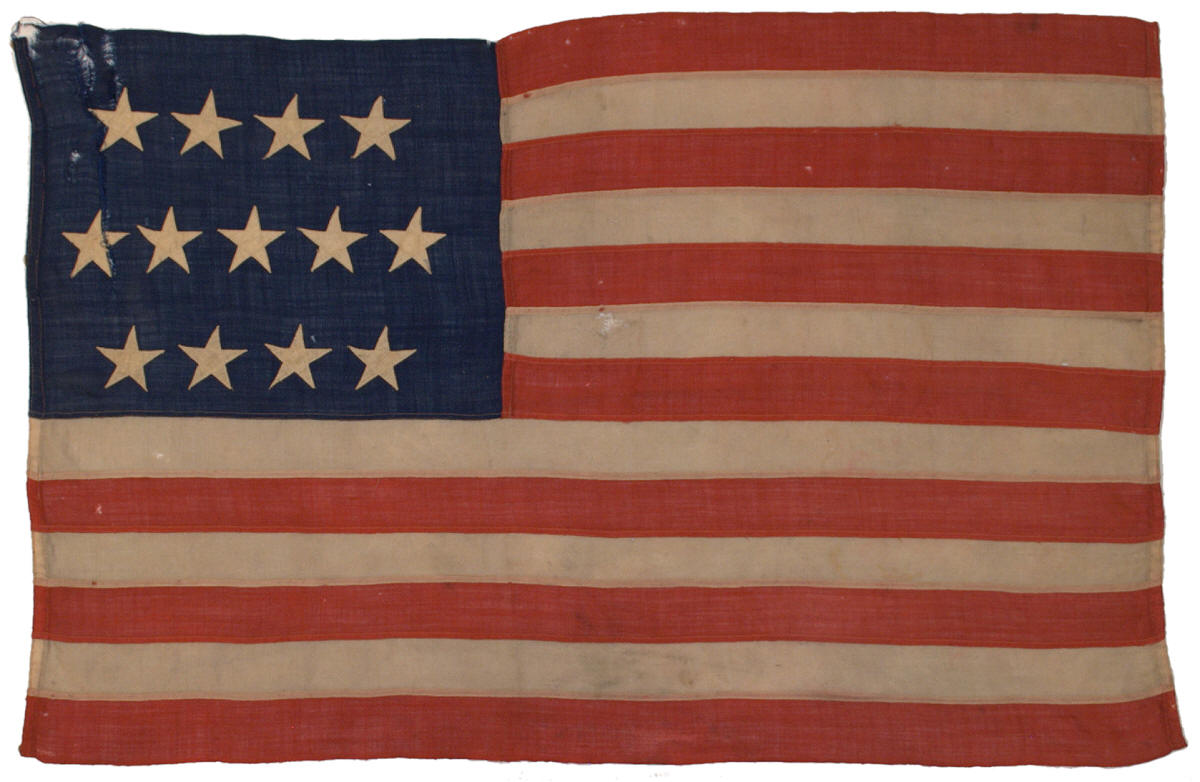
While 13 star flags
have been made throughout our nation's history, certain
patterns of the 13 star flag became popular, or faded
from popularity, at different times in our history.
Surprisingly, patterns such as the Betsy Ross pattern of
13 stars in a circle only emerged after the American
Centennial in 1876, and became most popular and
prevalent at the time of the Bicentennial in 1976.
The 4-5-4 pattern is documented as having been used in
18th century, but no surviving period examples are
thought to exist. The pattern was used on US Navy
boats in the period prior to the Civil War, but seems to
have fallen out of use, being replaced by the 3-2-3-2-3
or Francis Hopkinson pattern. By the time of the
Centennial, both the 3-2-3-2-3 pattern and the scarcer
yet somewhat more common 13 star medallion pattern
emerged as the prevalent style. By the time of
this flag's construction, circa 1890 to 1910 (a
timeframe estimate based on the use of zig-zag
stitching, the style and irregularity of the stars, the
imprecise cut of the flag, and the look and feel of the
wool), flags in the 4-5-4 pattern were very rarely made.
In fact, I've actually seen more examples of the pattern
that date to the Civil War and earlier than made in this
later period. As a result, the flag evokes a more
primitive, early American feeling. The flag was most
likely used as a yacht ensign, though it may have also
been used on land as well. The flag has no hoist,
though there is evidence that there were tabs sewn to
the hoist end of the flag in order to affix it to its
staff. The flag is unusually small for an antique
pieced and sewn flag. As a result of both its small size
and rare star pattern, the flag is a fantastic example
from the late 19th- to early 20th century.
|

